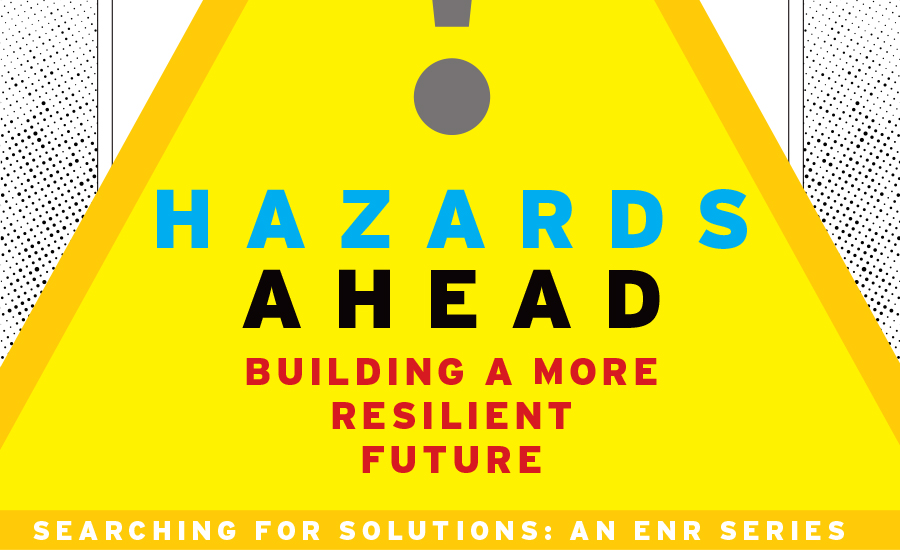Hazards Ahead: Searching for Solutions, an ENR Series
Building a More Resilient Future

Every year there is a new natural disaster added to the lists of worst disasters the U.S. has experienced: Hurricane Harvey, the Camp Fire, historic floods in Nebraska. Even the best engineer can’t design for 100% safety during cataclysmic events. But engineers, architects, contractors, land-use planners and others in the construction industry can, and are, taking steps to help communities be more resilient—the ability to adapt and become better prepared to meet, and recover from, the next catastrophe. They are working in places like Ellicott City, Md., to help the historic city adapt to repeated flooding. They are working in Fort Collins, Colo., to help mitigate the multiple threats of drought, heat, flood and fire. And they are working in Paradise, Calif., to help the town chart a path forward after the deadly 2018 inferno. Throughout this year, ENR will examine how the industry is contributing to solutions with stories about the places and the people who are preparing for the hazards ahead.
- Raised Bridge, Road Resolve Iowa City's Flooding Problem
- Engineers Called to Act on Climate Change
-
World Trade Center Design at the Junction of Security and Resilience
- Category 5 Hurricane Dorian Raises Alarm on Resilience
- Virginia Beach Makes Plans to Keep Its Head Above Water
- Ellicott City Provides a Model of Resilience for Future Flooded Cities
- California Towns Rebuild After Wildfires With Resilience in Mind
- VIDEO: Defending the Line Against Wildfire
- Santa Rosa Aims for Community Resilience with Quick Rebuild
- Past Floods Teach Cedar Rapids How to Rebuild Resiliently

